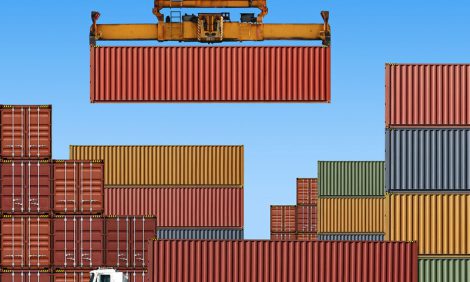



Biosecurity – Bio-Management
GLOBAL - When someone mentions biosecurity, the first thought that comes to mind is preventing the entry of a new pathogen or “bio-exclusion.“ However, biosecurity also includes managing the pathogens already on the farm or “bio-management,“ and here are some thoughts on that topic.When sorting out a health challenge, I think of pig health or disease hanging in the balance between a pig’s defenses and pathogens, and how important it is to manage both sides of the balance for success. Specifics are beyond the scope of this report, but here are some general principles to keep in mind. Remember, we’re talking about pathogens already on the farm.
The weight on the pathogen side of the balance is determined by the number of different pathogens in the herd (“high vs low health herds”), the virulence of the pathogens (“high vs low path”), numbers of any pathogen (the load) and/or changes in a pathogen’s genetics over time (mutations, recombinants, genetic drift and genetic shift).
So we allocate resources to:
- minimize the number of different pathogens in the herd by investing in high health genetics, depop/repop or elimination programs
- minimize the pathogen load in the environment by strategic sanitation, disinfection and drying, and minimizing contact with manure, pests (rodents and flies), dirty footwear/ clothing and dirty processing/ fostering carts
- minimize the pathogen load in the pig population by segregating age groups by barn design, multi-site production, all in/ all out flow, and segregating the sick pigs
- the strategic use of antimicrobials, and
- the strategic use of diagnostics.
The weight on the pig’s defense side of the balance is determined by genetic resilience, comfort (freedom from stress), nutrition, the integrity of the natural barriers on the skin and lining of the airways and gut, a healthy microbiome, maternal (passive) immunity and active immunity.
So we allocate resources to:
- invest in robust genetics
- manage the environment, feed and water availability, space allowance and group integrity to keep pigs in their comfort zone
- manage nutrition for optimal health
- manage mycotoxins
- manage air quality to support healthy skin and airway barriers
- perhaps use nutritional aids that support a healthy gut barrier
- perhaps use pre- and/or pro-biotics to support a healthy gut microbiome
- implement gestation vaccines or natural exposure to enhance maternal immunity
- maximize colostrum supply
- manage colostrum intake, and
- implement a strategic growing pig vaccination program.
Having worked with different swine genetics over the years, I am still impressed with how robust the high health Genesus pig is in our nucleus and multiplier herds, as well as in our customer herds, even in very low health situations in foreign countries.
“Genesus has participated in large-scale collaborative research projects revolving around disease challenges. Collaborators include the Canadian Swine Health Board, Genome Canada, Genome Alberta, US Department of Agriculture, Canadian, US, European universities and other swine genetics companies. These health projects will be important in the development of genetic improvement programs for disease resilience in both growing pigs and producing sows. The potential contribution to increased profitability of Genesus customers is large. This is the reason Genesus has made such a significant investment in the population health area.”
-Excerpt from Genesus Genetic Research and Development Program brochure, available at http://www.genesus.com/flip_pong/randd/.
Joe Rogowsky DVM









